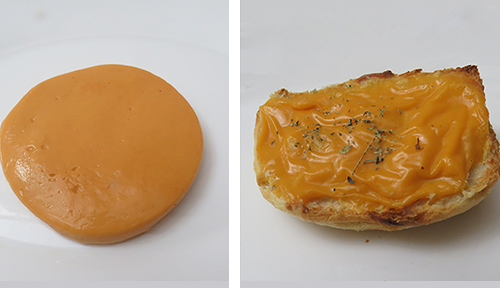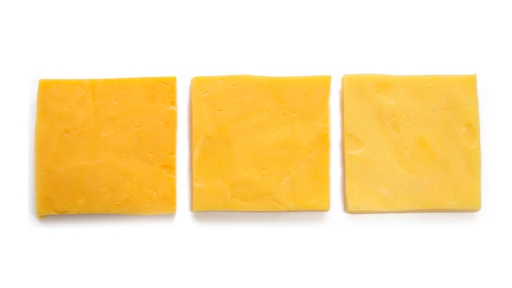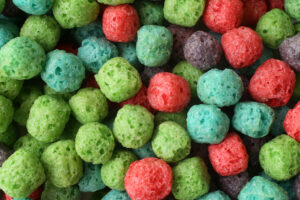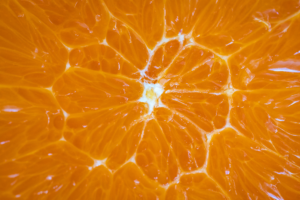Cheese substitutes, or plant-based cheese analogues, have been on the market since at least the 1970’s. But since 2018, dairy-free cheeses have risen in popularity with the increased consumer demand for plant-based foods.
They are achieved by substituting the dairy proteins in cheeses with plant-based ingredients like nuts, cereals, and pulses, with varied ratios of proteins, fats, and starches that provide different textural, nutritional, and cooking attributes. As with other plant based options, there are challenges in creating a product that not only looks like its traditional counterpart, but also has a similar flavor, texture, and functionality.
In this article, we’ll take you through some of the common challenges when making plant-based cheese and the colour solutions that can help you provide your consumers with an authentic dairy-free cheese experience.
A Challenging Cheese
The most common vegan cheese on the marketplace is the non-ripened processed cheese that comes in slices, grated, or block forms. These typically use a combination of water or plant milk, coconut oil, and starch, as well as salt, flavor, and color as required.
The challenge comes in when trying to mimic the way milk reacts when made into cheeses. Bases such as coconut, soy bean, or nuts that are rich in fats and protein such as cashews, almonds, or pine nuts are often used. The addition of starches provides an emulsification and stabilizing effect as well as adds a creamier mouth feel to the final vegan cheese.
Vegan cheese made from nuts typically doesn’t melt, for example. However, using a base of coconut oil will give a vegan cheese that will mimic the melting properties of cheeses, as seen in the image below.

Controlling the ratio of the water, protein, starch and fat also allows for spreadable forms of cheese analogs, which can be flavored with herbs, spices, or even fruits to achieve distinctive sensory profiles.
As with parallel projects to remove sugar, salt, and fat from products there is no one ingredient that can replace milk within a cheese system to deliver an analogous effect and often a combination of ingredients is needed.
Including Color
For manufacturers producing a variety of plant-based cheese, it is often best to use to use an oil soluble color. The most commonly used option for plant-based cheese is oil soluble beta-carotene. This is because it not only has the right golden yellow cheese color, but also because of its consumer recognition as a natural colour, as well as widespread regulatory approval. It can easily be applied to the coconut oil before the addition of the water/milk and starch mix.
As seen in the image below, by adjusting the dosage of the carotene a variety of shades can be achieved – from cheddar yellows to a deeper orange similar to a Red Leicester.

Other common color options include oil-soluble annatto, paprika, or blends with curcumin (seen below) for customised shades. These colors all have excellent heat stability for consistent processes and no risk of off flavors that could impact the consumer experience. If you do need to use water soluble colors or emulsions, you can mix these into the water or milk component prior to combining with the remaining ingredients.

Vegetable juice colors like Vegebrite® orange carrot or golden yellow are good alternatives to get attractive labels for consumers and unique identities in cheese analogs. In this case, the dosage rate required to get the target hue may be larger when compared to beta-carotene or annatto. They would also have to be incorporated with a compatible emulsifying system since they are water dispersible formulas.
Despite what color you choose, the key to on-shelf product colour stability is the use of a synergistic cocktail of antioxidants, which will protect and retain the color through the manufacturing process and through the shelf life of the final product.
Spreadable or cream cheese analogs allow for a wider array of colors to match the flavor creation. Here imagination is the limit and the color can be incorporated as a uniform shade, as textured inclusions, or with a marbled effect: greens for herbal flavors, browns for umami profiles like mushroom or onion, bright oranges for spicy versions, and even red and purples for fruity sour-sweet spreads.
Whether your plant-based cheese is for a traditional cheese slice or block or meltable, hot preparation, natural colors play an important role adding up to the sensory experience of authenticity. Request a sample or contact us to get started on your plant-based cheese project.
Interested in natural colors for your next dairy-free cheese application? Request a sample or contact us to get started on a project.






